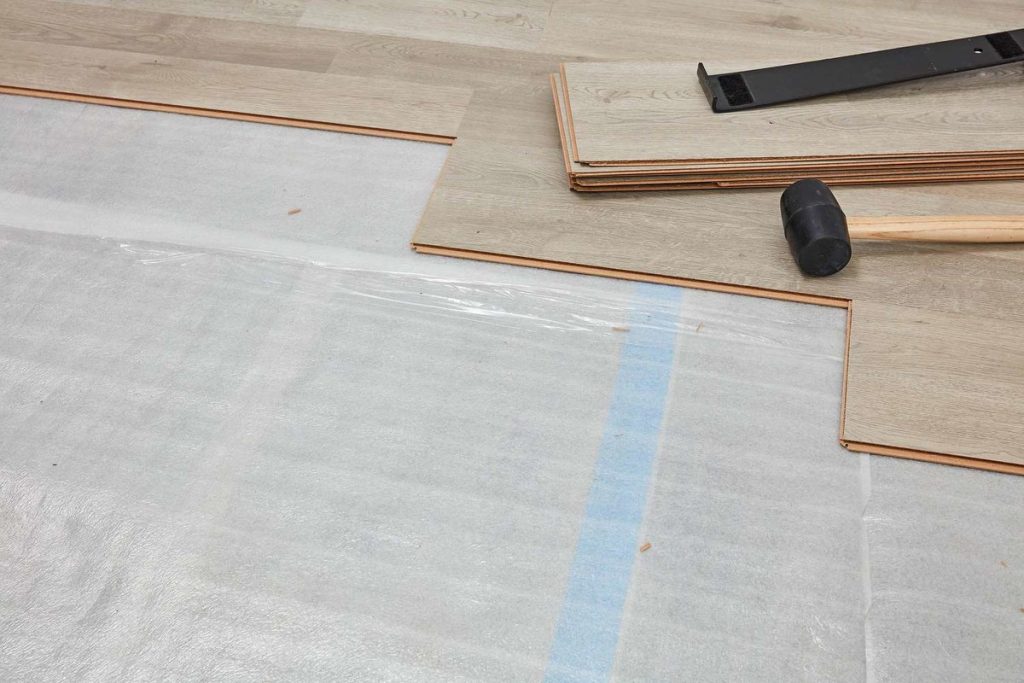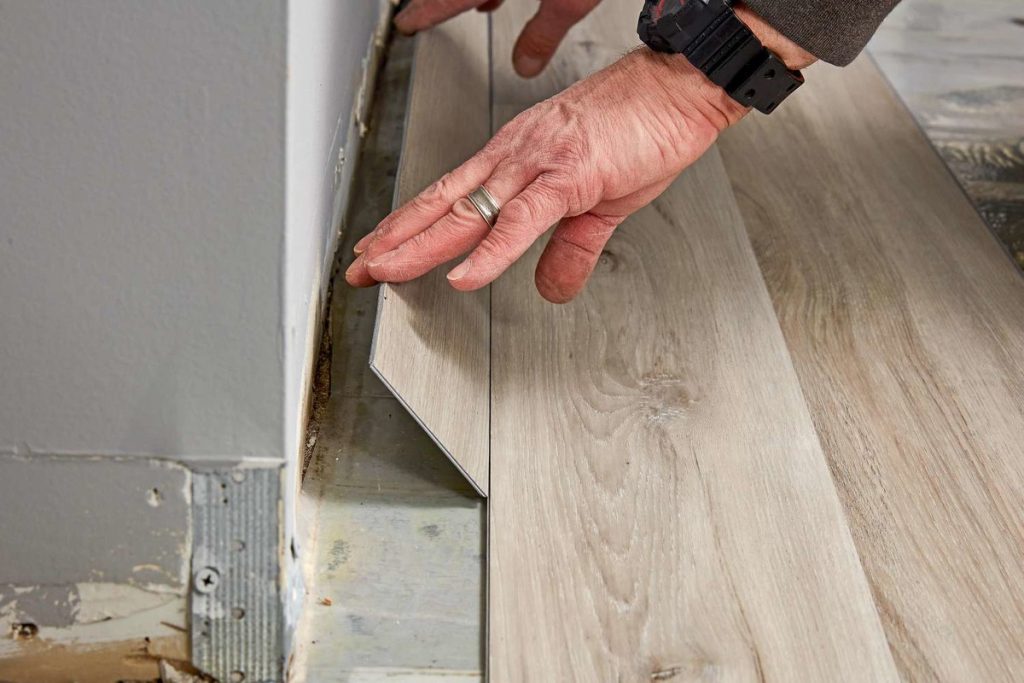The underlay for vinyl flooring often goes unnoticed but is essential for durability, comfort, and performance. Similar to a strong foundation for a building, the underlay supports your floors, protecting your investment from issues down the line. Professional installation services ensure you get the most out of your underlay, enhancing its effectiveness. Underlay provides a stable base for vinyl flooring and offers many benefits. It reduces noise, manages moisture, and controls temperature. Choosing the right underlay can make your space more comfortable and quiet.
Discovering the Diverse World of Underlay Materials
The market presents a wide array of underlay materials, each with its distinct characteristics and advantages. Navigating this varied landscape can be challenging, but worry not – we’re here to help. Here’s a comprehensive overview of the most common options:
- Foam Underlay: Affordable and versatile, foam is a popular choice. It comes in different thicknesses and densities. Foam helps with cushioning, noise reduction, and moisture resistance.
- Cork Underlay: Cork is a sustainable and eco-friendly option. It provides thermal insulation, reduces noise, and resists mould and mildew. Cork also feels comfortable underfoot.
- Felt Underlay: Made from recycled fibres, felt is budget-friendly and great for reducing noise. While it doesn’t offer much moisture protection, it works well for sound insulation.
- Rubber Underlay: Rubber is perfect for spaces where sound control is key, like home theatres. Its dense structure blocks sound and resists moisture.
- Combination Underlay: Some underlays combine materials, such as foam with a moisture barrier. These hybrids offer cushioning and moisture protection in one product.
With this array of options at your disposal, choosing the most appropriate underlay becomes a matter of balancing your specific requirements, such as moisture resistance, sound insulation, and thermal regulation, against your budget and personal preferences.
Evaluating Your Subfloor: The Cornerstone of Success
Before choosing an underlay, check the condition of your subfloor. A good foundation is critical for the longevity of your vinyl flooring. This is where flooring installation professionals come in handy, ensuring that the right preparation steps are taken for a seamless installation.
- Concrete Subfloors: Concrete retains moisture, so it’s important to use an underlay with a moisture barrier, like rubber or a combination underlay.
- Wooden Subfloors: Wood subfloors manage temperature and moisture better but may lack sound insulation. Felt or cork underlays work well to absorb noise.
- Existing Flooring: When installing over existing flooring, use a rigid underlay. This helps level any uneven surfaces for a smooth vinyl installation.
Moisture Management: Safeguarding Your Floors
While vinyl is water-resistant, moisture can still seep through seams and damage your subfloor. A vapour barrier underlay can protect against this. These specialized underlays, often made from polyethylene or featuring an integrated moisture barrier, act as a formidable defence against moisture intrusion. By preventing water vapour from permeating through the subfloor, you can effectively protect your vinyl floors from warping, buckling, or other moisture-related issues.
In areas prone to dampness, such as basements or regions with high humidity levels, the inclusion of a vapour barrier underlay becomes even more crucial. Additionally, some underlays boast antimicrobial properties, further safeguarding your living spaces from the growth of mould and mildew.
Sound Insulation: Fostering Tranquillity in Your Home
One of the main advantages of using an underlayment with your vinyl flooring is its ability to reduce noise. Whether you want to lessen the sound of footsteps in a multi-level home or create a quiet space in your home cinema, the right underlayment can be crucial.
When looking at the sound-dampening qualities of different underlayments, you’ll come across ratings like IIC (Impact Insulation Class) and STC (Sound Transmission Class). These numbers measure how well an underlayment can reduce impact noise and airborne sound transmission, respectively.
Generally, higher IIC and STC ratings suggest better soundproofing. However, it’s also important to consider the Delta IIC rating. This comprehensive measure gives a more accurate picture of an underlayment’s sound-reducing abilities, taking into account various testing methods and real-life situations.
By carefully considering these ratings and choosing options with excellent sound insulation properties, such as cork, rubber, or dense felt underlayments, you can create a peaceful environment in your home, free from everyday noises.
Temperature Control: Enhancing Comfort and Efficiency
Besides reducing noise, a well-chosen underlayment can also help regulate temperature in your home. By acting as an insulating layer between your subfloor and vinyl planks, certain underlayment materials can help maintain a comfortable indoor temperature, potentially reducing your need for heating and cooling systems.
When looking at thermal insulation properties, look for products with an R-value rating. This number measures an underlayment’s ability to resist heat transfer, with higher values indicating better insulation.
Cork and rubber underlayments, for example, are known for their exceptional temperature control properties, making them ideal for homeowners who want to maximize energy efficiency and create a cozy living space.
Vinyl Flooring Types: Matching Your Underlayment Choice
The vinyl flooring market offers a wide range of options, each with its own characteristics and installation requirements. To ensure the best performance and comply with manufacturer warranties, it’s important to choose an underlayment that suits the specific type of vinyl flooring you’ve selected.
Rigid Vinyl Plank Flooring
Engineered vinyl plank (EVP) flooring, also known as rigid core luxury vinyl flooring, comes in three distinct core compositions: stone-plastic composite (SPC), wood-plastic composite (WPC), and pure vinyl. Each of these types presents unique challenges and considerations when it comes to choosing an underlayment.
- SPC Floors: These rigid floors often work best with softer underlayments made of foam, felt, or cork. These materials provide cushioning and help absorb sound, enhancing the floor’s performance.
- WPC Floors: Given their thicker structure, WPC floors typically need thinner underlayments. This helps maintain a consistent floor height throughout your home.
- Pure Vinyl Floors: As the least durable option, pure vinyl floors require top-quality underlayments to make up for their lack of inherent durability and comfort.
Flexible Vinyl Plank Flooring
While rigid vinyl flooring offers more durability and longevity, flexible vinyl plank flooring is a cost-effective choice for short-term or temporary installations. When using flexible vinyl planks, it’s crucial to follow the manufacturer’s guidelines regarding suitable underlayment materials and installation methods.
Summary
Choosing the right underlay is crucial for the performance and longevity of your vinyl floors. Whether you need sound insulation, moisture protection, or temperature control, there’s an underlay to meet your needs. With proper selection and installation, you can enjoy a comfortable, quiet, and durable flooring experience.


